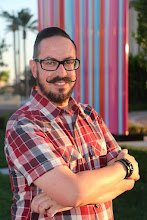Atomic Testing Museum: New Show and Future Plans
In a city that is seen as both an American expression of capitalism and a toxic waste dump of bad behavior, a museum dedicated to Nevada’s nuclear history and material culture is right at home. An atomic museum is a most Vegas of museums.
The Atomic Testing Museum started out as the Coordination and Information Center, also known as the Nuclear Testing Archive. The center was previously based at the Bechtel Nevada industrial complex in North Las Vegas, with its purpose being “to collect and make available all historical documents, records, and data dealing with radioactive fallout from all U.S. testing of nuclear devices.” Along with the gallery spaces, the new Atomic Testing Museum, located on the first floor of the Frank H. Rogers Science and Technology Building, is now home to the public reading room and continues to serve the same purpose as information clearing house. In addition to the more pleasurable digs, the new space eliminates one unique experience that the Lossee Road location had: a car search by Wackenhiut security officers (which the author was privileged to have a couple of years ago) before being allowed on the Bechtel property.
The museum is home to two gallery spaces, one now open and the larger permanent exhibition still being installed with a tentative opening date of February 2005. With full-size recreations of caves and testing equipment, the large set pieces emulate the strategy of local casinos by creating an immersive themed environment. Until completion, the museum’s website provides computer generated images of what visitors will find. What they won’t find are rows of display cases or static rooms full of pictures. Instead, they will find encompassing environments, meant to surround the visitor and provide them with a sense of context. Underground bomb testing tunnels and control rooms are amongst some of the larger exhibition elements. And some of the largest artifacts taken from the Nevada Test Site had to be put in place before the museum’s completion and the building finished around them.
The other exhibition room is open now and hosting a new show, “Nuclear Landscapes,” by University of Nevada, Reno Professor Peter Goin. This show is a good example of how the museum is not a mouthpiece for the nuclear industry, telling solely a positive take on weapons development. The show is a nuclear travelogue, detailing atomic testing’s legacy on assorted blast sites and the man-made structures that were laid waste. The result would be a poignant exploration of the destructive power of man’s taming of the atom if it weren’t for one thing: the addition of black text on each photograph with a short title or description. Either someone was concerned that the pieces weren’t able to fully convey some sort of meaning or they were meant to take the place of proper labels, which were provided for this exhibition. Whatever the reason, the text kills the photo’s ability to fully act as a document of the scene, be it an island beach with twisted metal or a scorched desertscape. The qualities of these pictures, the beauty of the various locations, and the seriousness of the topic deserve better than to be defused in such a clumsy manner.
The small exhibition hall serves the purpose of being a location for display and education. But the room lacks good looks, and what is missing is a gallery aesthetic. This isn’t stopping the museum from contemplating more ambitious shows, and Jim Sanborn is an artist they are aware of. His "Atomic Time" exhibition would be a perfect complement to the Atomic Museum. Based on the Manhattan Project, it’s a collection of recreations, reproducing as much as possible the equipment used for early atomic tests. Not just content to mimic the appearance of the testing equipment, he actually recreates it, using materials to make the originals. The 1998-2003 piece “Device for Measuring the Neutron Flux of a Uranium Core” is made of paraffin blocks, chromium, stainless steel, brass, detector probes, oscilloscope, simulated hydraulic lift, wire, sound, and deuterium gas cylinder. The artist’s gallery would prefer another gallery play host to the works, so the museum would need to find a Vegas partner. It would take considerable time and effort, but bringing in an artist of Sanborn’s stature and a display of this kind would really raise the bar, and work towards cementing Vegas’s reputation as the burgeoning arts community it’s been claiming to be.
















































1 Comments:
even in astronomy hydraulic lift are being use nice
5:57 PM
Post a Comment
Subscribe to Post Comments [Atom]
<< Home